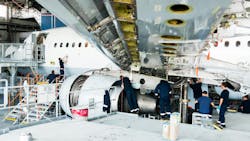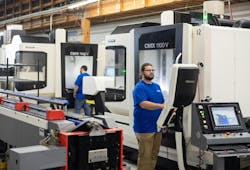Strengthening MRO Success: How Quality Parts Drive Compliance, Performance and Innovation
Key Takeaways
- Consistent quality assurance reduces failure risks, simplifies inspections and improves fleet readiness by ensuring parts meet FAA and OEM standards.
- Embedding KPIs like defect rates and rework frequency into management systems and using digital innovations drives continuous improvement and aligns quality with customer satisfaction.
- Proactive risk mitigation through supplier monitoring, real-time analytics, staff training and root cause analysis minimizes downtime and enhances technician confidence.
In today’s fast-paced aviation environment, aircraft interior components like seating, lavatories and galleys must meet rigorous standards while also delivering durability, performance and value.
These expectations demand a culture that prioritizes compliance, innovation and technician expertise. For MRO professionals, quality is the foundation of every safe and efficient operation.
How does consistent quality assurance benefit maintenance teams?
Every part installed on an aircraft must meet FAA regulations and OEM requirements.
Whether it’s a seating frame or lavatory assembly, parts must be engineered to deliver strength while reducing weight. A lighter component means fuel savings and fewer emissions, but only if it maintains structural integrity.
For maintenance teams, the result is a reduced risk of failure, easier inspections and fewer unplanned removals, all of which improve operational efficiency and fleet readiness.
Which systems help measure results and quality assurance?
Today’s quality assurance goes beyond basic compliance. Leading manufacturers now embed KPIs like defect rates, rework frequency and on-time delivery into integrated Business Management Systems. These metrics inform executive decision-making and tie quality directly to customer satisfaction and profitability.
At Jamco America, monthly executive reviews track these metrics by department, driving a cycle of accountability and continuous improvement. Quality becomes a shared responsibility across engineering, production and supply chain teams, enabling swift corrective action and long-term performance gains.
How to enhance quality by mitigating risk
Risk mitigation starts long before a part reaches the hangar. Aerospace leaders are taking a proactive stance by aligning quality assurance with enterprise risk planning, monitoring supplier quality, mapping out long-term disruptions and adopting a “ready anytime” audit culture.
FAA-approved supplier lists and real-time quality analytics ensure oversight across the production lifecycle. When defects occur, advanced root cause analysis tools help identify underlying issues fast and accurately. That translates to reduced downtime and higher technician confidence during installations and inspections.
Why is training staff important for maintaining top quality?
While automation and digital systems play a growing role in quality control, skilled technicians remain critical. That’s why structured, continuous training is key. It empowers employees to make decisions, provide feedback and uphold quality at every stage of production and inspection.
Open communication between frontline teams and leadership is essential. At Jamco, this feedback loop drives innovation and ensures that small issues don’t become systemic problems. It also ensures buy-in from the people closest to the work.
How digital innovations keep parts quality high
Model-Based Definition (MBD) is changing how aerospace parts are designed, verified and maintained. By embedding specifications directly into 3D CAD models, MBD eliminates ambiguity, shortens production cycles and enables automated inspections.
Jamco America has adopted MBD to ensure consistent manufacturing and real-time quality checks. Inspectors can verify features against embedded data, reducing setup time and boosting repeatability. For maintenance teams, that means more consistent components, better fit and less troubleshooting.
How Jamco America ensures parts compliance and quality
Operating under an FAA-approved Quality Management System, Jamco America holds both ISO 9001 and AS9100 certifications. As a Production Approval Holder (PAH) with Organization Designation Authorization (ODA), the company can rapidly implement design changes and manufacture parts that meet necessary standards.
Jamco’s system-wide approach to quality includes supplier vetting, internal audits and cross-functional collaboration. It’s backed by data-driven reviews and training programs that close the loop between design, production and field performance.
For the MRO community, quality must be embedded from blueprint to installation. By aligning people, processes and data, manufacturers like Jamco America can enhance maintenance practices in aerospace by prioritizing quality of all parts.
Through digital transformation, sustainability practices and a highly trained workforce, quality becomes not just a requirement, but a competitive advantage.
About the Author

Stephen Zurel
PMP, Senior Manager of Quality Organization, Jamco America, Inc.



